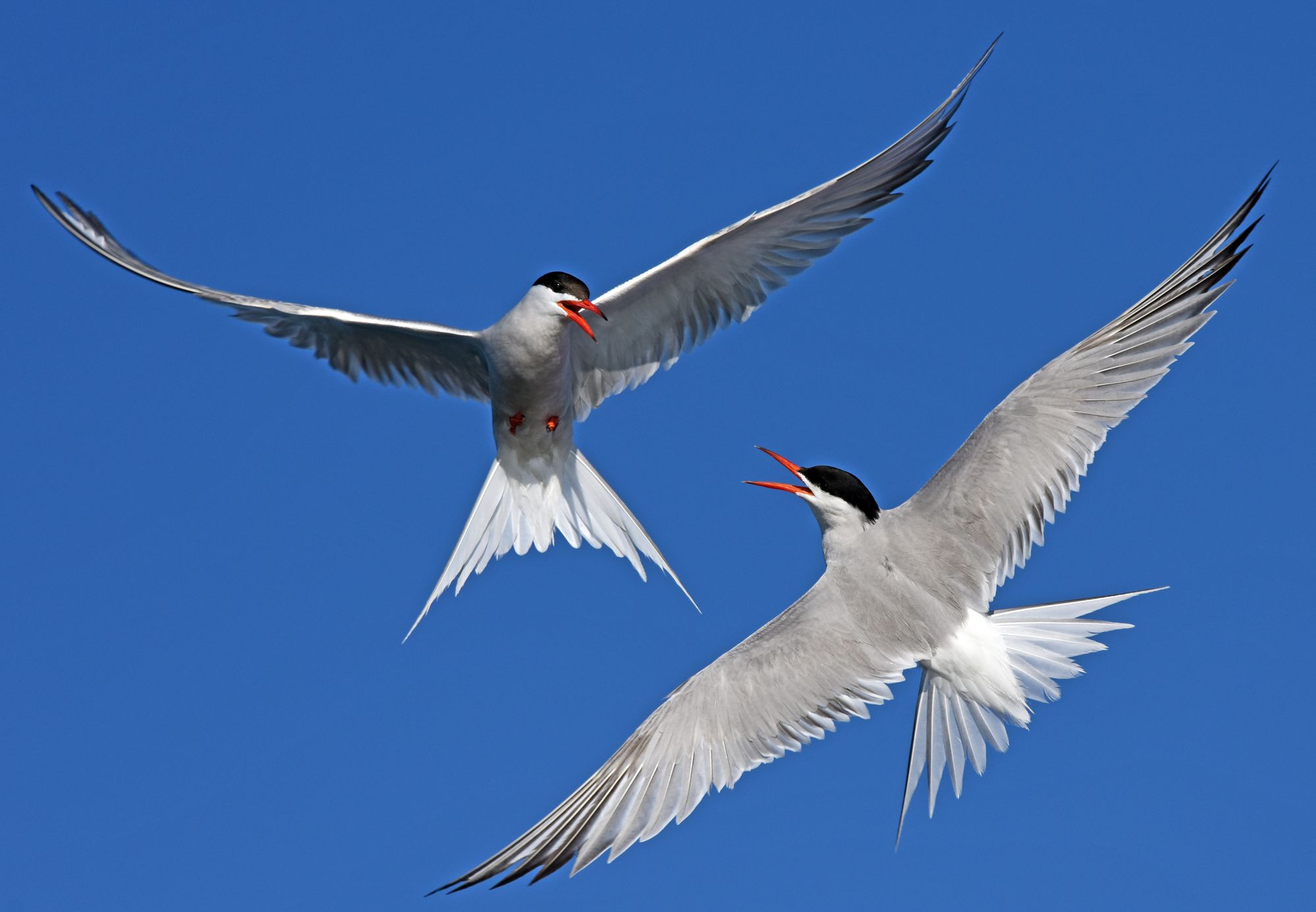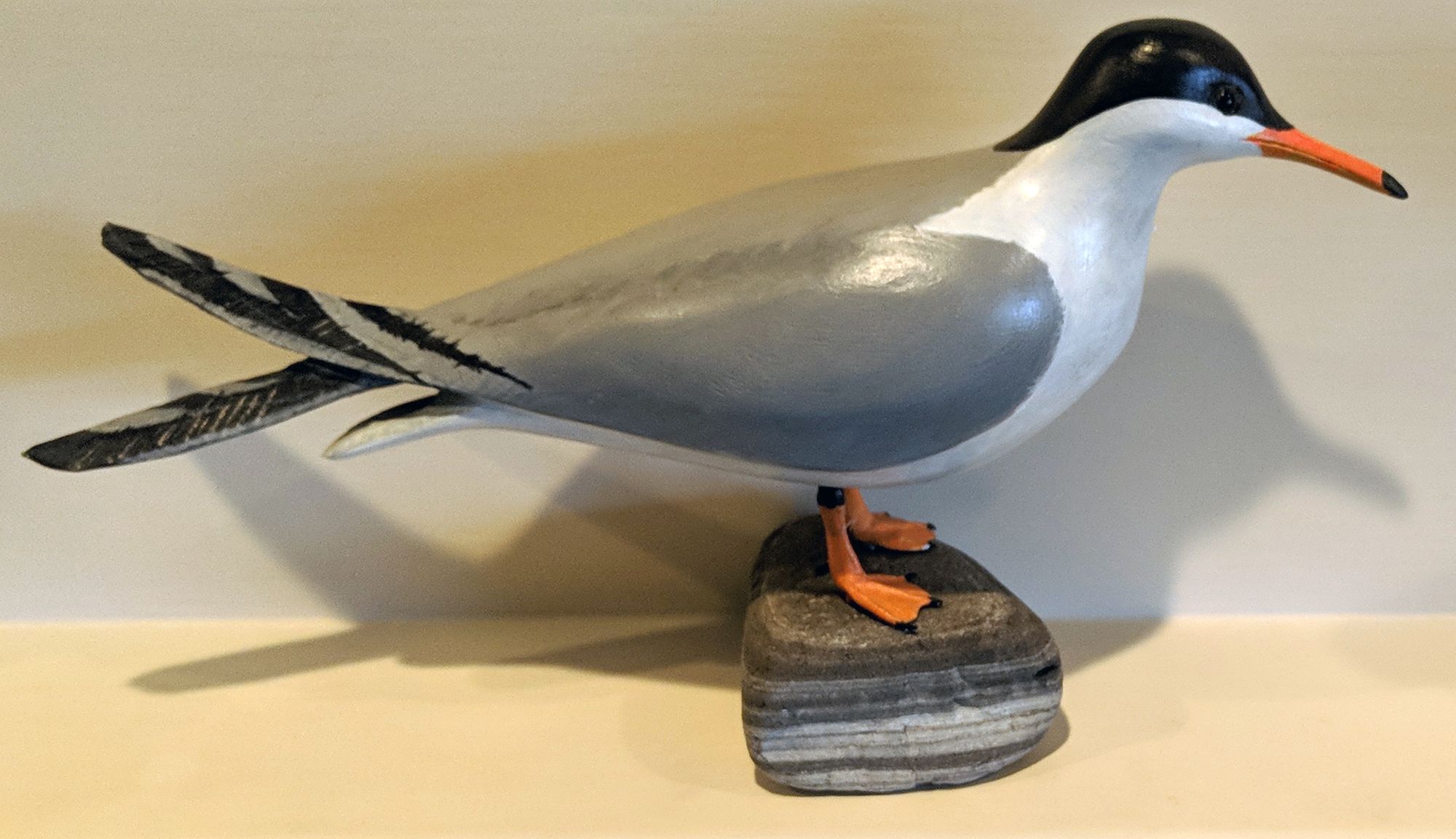Ever since my introduction to becoming a “tern farmer” twenty years ago, I have been searching for a way to get across the importance of helping to restore the habitat of these ubiquitous water birds in the St. Lawrence River Valley.

According to Dr. Lee Harper, project leader for Save The River’s Tern Monitoring and Restoration program, the population of common terns on the River had dropped precipitously over the last sixty years from 20,000 breeding pairs to less than 1,000. This was due to pressure from hunting, DDT, ring-billed gulls, and loss of habitat.
When our good friend and long-time Save The River member Elaine Tack offered to make a video on the project being performed by Save The River, TILT, and many volunteers under the leadership of Dr. Harper, we jumped at the opportunity to work with her.
Any of us who have been exposed to Elaine’s professional videos of River projects know the high quality of her photography, script writing and editing. The finished films are treasured by the organizations that are fortunate enough to have her create a film documentary. Save The River’s project involved climbing steel ladders, filming in and out of small boats, and trekking over granite shoals - all while looking through a camera lens, avoiding just hatched chicks and nests, and directing our dedicated volunteers who are very focused on their work while at a nesting site.
“It’s Hard to be a Tern” made its national debut at the Wildlife Conservation Film Festival in New York City where it won Honorable Mention. The film has also been awarded Finalist status at the prestigious Canada Shorts International Film Festival.
Rather than go into a lengthy update on the Tern Project, I invite you to take seven minutes to watch and enjoy “It’s Hard to be a Tern.”
This important monitoring and restoration work of a New York State threatened species could not be done without the volunteer efforts of many River residents, along with the support and cooperation of Thousand Islands Land Trust (TILT), New York State Department of Environmental Conservation, St. Lawrence Seaway Development Corporation, New York Power Authority, and Dr. Lee Harper and Riveredge Associates.
TILT has generously provided the use of two of its island properties, Tidd and Eagle Wing Shoals, as natural nesting habitats, since the early days of the program. Every year the TILT's Stanley workboat loads up volunteers to assemble and then take down the grids seen in the video. This type of cooperation by landowners helps to make the monitoring and restoration project a success.
In addition, special volunteer recognition needs to be given to our River friends: Jim McGarry, Bill and Judy Munro, Kate Breheney, Lyn Pol, and Katrin Schubert for their many years of dedication to this project. Quite a few of the early season boat rides out to the nesting sites are done in less than favorable weather conditions. But they have persevered, along with Save The River’s Program Managers and generations of our summer interns - starting with Pat’s and my daughter Sara back 2001. Special recognition also needs to be given to then Save The River former Executive Director, Stephanie Weiss, who began the volunteer effort under the guidance of Dr. Harper.
For more background on last year’s tern results and the history of the project, I would recommend two articles in Thousand Islands Life’s archives: Lindsey Proulx, a former Save The River summer intern, wrote an excellent article about the 2018 season, and my October 2013 article summarized the work up until that point.
The Common Tern Monitoring and Restoration project has been a Save The River project for 22 years. 2018 saw a record number of tern chicks banded on two artificial sites we monitor. Save The River’s mission is to restore, preserve, and protect the Upper St. Lawrence River now and for generations to come. Save The River is a membership supported organization, and needs all of our St. Lawrence River residents to become members to support work on terns and our other projects. Several of those projects are Blocking Asian Carp, education projects In the Schools & On the Water, Replace Single-Use Plastics, Bass and Muskie Catch & Release, Beach Watch water quality monitoring, shoreline cleanups, and Riverkeeper training. If you are a member of Save The River, I would like to thank you very much; if you are not a member, please join today at donate.savetheriver.org.

This year’s winter raffle at Save The River is of a common tern carved and donated by talented islander George Textor. From the artist:
“I have been carving and painting birds for over forty years. I mostly carve and paint shorebirds, everything from the Great Blue Heron to Killdeers, Ring Neck Plovers, Spotted Sandpipers, and Kingfishers, plus a few odd owls and crows. Like many River carvers, I started carving a few duck decoys but found shorebirds more diverse and interesting. I use special carving knives and draw shaves and seldom use power tools. I draw and cut my own patterns for my bandsaw. The common tern is a wonderful bird to watch dive for small fish in the River. I am so pleased with Save The River’s work in protecting and enhancing the terns’ habitat so that we all might enjoy their acrobats.“
Raffle tickets can be purchased by stopping by Save The River, or calling the office at (315) 686-2010.
I hope to see you soon on The River,
By John Peach, Save the River
John Peach was appointed to serve as Executive Director and Upper St. Lawrence Riverkeeper, in August of 2018. John served on Save The River’s Board from 2000-2018 in several key roles, including as aa President from 2004-2007, on the executive committee, and most recently as Treasurer, leading the finance committee. He has been an active volunteer in Save The River’s Common Tern Monitoring Program and Shoal Marking Program and will continue his work in these programs while serving as executive director. Prior to his retirement several years ago, John worked as an international business consultant, in fields including arts, oceanographic research, environmental, and pharmaceuticals. He and his wife Pat call Huckleberry Island, near Ivy Lea, home for a significant portion of the year.
[Header photograph: Common tern with dinner. Photo by Save The River common tern monitoring volunteer, Jim McGarry.]
Posted in: Volume 14, Issue 3, March 2019, Nature, News article, Videos
Please click here if you are unable to post your comment.
